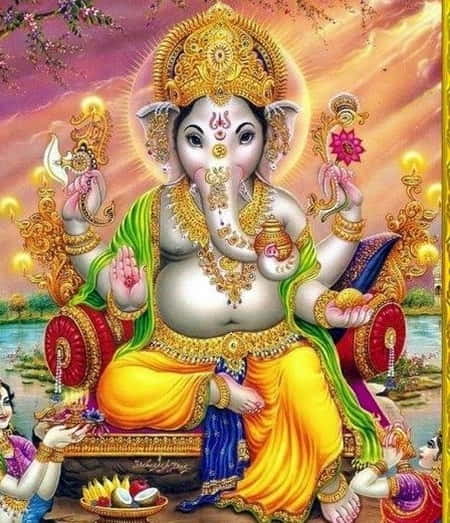Worship Ganesha
Share this post
Ganesha
Lord Brahma declared that any worship conducted without seeking Ganesha’s blessings would be fruitless. He is considered a loving, playful, protective Deity whose blessings would grace any endeavor. He is therefore ceremonially invoked before weddings, housewarmings, taking an important exam, starting a new business and other important events.
Perennially happy, playful, unperturbed and wise, this rotund Deity (Ganesha) removes obstacles to good endeavors and obstructs negative ventures, thus guiding and protecting the lives of devotees. He is the patron of art and science, the God inhabiting all entryways, the gatekeeper who blesses all beginnings. When initiating anything-whether learning, business, weddings, travel, building and more-Hindus seek His grace for success. He is undoubtedly the most endearing, popular and widely worshiped of all the Hindu Deities. Ganesha Chaturthi (also called Vinayaka Chaturthi) falls on the fourth day in the waxing fortnight of the month of Bhadrapada in the sacred Hindu lunar calendar, which translates to a certain day in AugustSeptember. It is essentially a birthday celebrating Ganesha’s divine appearance.
Devotees often fashion or purchase a Ganesha statue out of unbaked clay. Many sculpt Him out of a special mixture of turmeric, sandalwood paste, cow dung, soil from an anthill and palm sugar. The Deity image is placed in the home shrine amongst traditional decorations. A rite of worship and prayer, called puja, is conducted daily, invoking the energies of the Deity and inviting Him to reside in the clay image. Mantras are chanted and offerings are made throughout the puja, including incense, lighted lamps, cooked food (naivedya), fruits, durva grass, tulasi and pomegranate leaves-and fl owers, especially red ones. After ten days, a simple puja is performed before the statue is taken for a formal departure (visarjana). Often entire communities, from dozens to tens of thousands of devotees, gather each year for this final day of ceremony. The icons are carried on an ornate metal tray-larger images are borne on a palanquin by several strong men-to a lake, a river or the sea. There Ganesha is consigned to the water after removing non-degradable paraphernalia.
Ganesha, keeping in mind His elephantine nature and prodigious appetite. People offer several varieties of fruits such as mangos, bananas and sugarcane. Sweets are the elephant-headed Deity’s delight, so to express their love families take great pains to make special tasty treats.
Who is Ganesha?

Comments